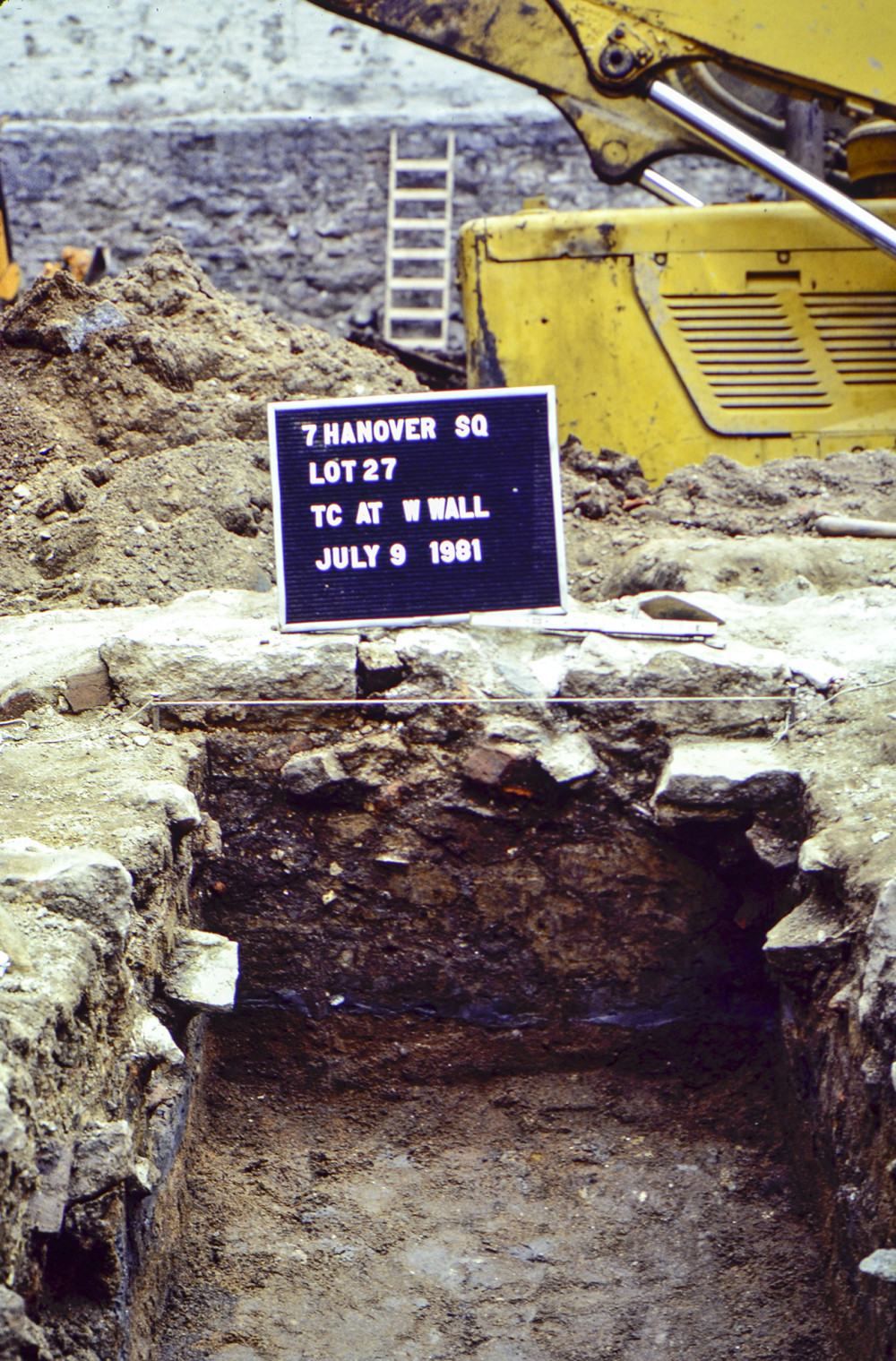This context (Catalog #1118, Lot 27*, Test Cut AT, Strat 2, Level a) consists of artifacts from mixed deposits consisting of mostly brown silty sand with mortar from within a feature located in the front portion of Lot 27*, adjacent to the Lot 26* boundary wall. Test Cut AT was placed in this area and measured two feet and a half by six feet. Excavation began one and a third feet below the wooden basement floor of building #2. The excavators uncovered what appeared to be part of a circular stone feature. The area lying within the stone ring was in the eastern portion of the test cut, and the feature was cut off outside of the boundaries of the test cut. It is likely that the feature was associated with the building phase prior to the construction of building #3. To the south of the feature, it was likely cut off by the installation of stone slabs associated with one of the later building phases.
The remaining part of the feature only consisted of one coarse of stones that were embedded in the brown silty sand with mortar that constituted the uppermost deposit excavated in the test cut. The deposit sloped downward from west to east and was between two to six inches thick. The deposit immediately underlying the one associated with the installation of the feature consisted mainly of yellow silt, underlain in some places by a thin layer of blue/gray clay. Due to difficulties in determining soil changes in the field, the excavated yellow silt was contaminated with material from the brown silty sand from the feature trench and pit and with the underlying blue clay. This context record represents the uppermost of the of the excavated mixed deposits. The combination of these mixed deposits yielded 36 datable ceramic sherds and with the combined ceramic evidence, it is thought that the date of demolition of building #5 and the installation of the feature perhaps occurred early in the last quarter of the 18th century.
The excavators believed that it was possible that the feature functioned either as a privy or a drainage sump. In either case, a deeper hole in the middle of the pit would assist with drainage, and would be consistent with either function. The ceramic assemblage suggests that the feature was installed sometime after the introduction of creamware in the 1760s and prior to the introduction of pearlware in the 1780s. For more information about the deposits associated with Lot 27*, please read pages 22 to 112 of the 7 Hanover Square site report.
-
Collection method
This context was excavated using trowels. All of the soil was dry screened using 1/4 inch mesh.
-
Soil description
Brown silty sand with gray clay pockets and yellow silt pockets



